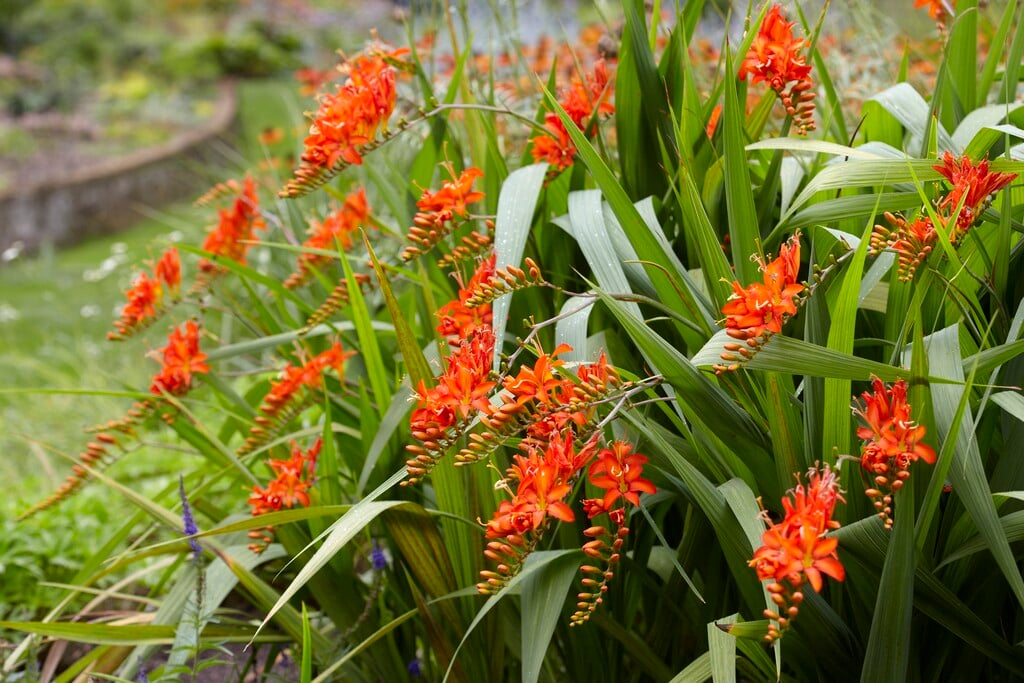Crocosmia 'Firebird'
montbretia 'Firebird'
A bulbous herbaceous perennial with upright, lance-shaped dark green leaves. Arching stems bear large, red-orange tubular flowers with a yellow throat from summer through until autumn

Buy this plant
Size
Ultimate height
0.5–1 metresTime to ultimate height
2–5 yearsUltimate spread
0.5–1 metresGrowing conditions
Moisture
Moist but well–drained, Well–drainedpH
Acid, Alkaline, NeutralColour & scent
| Stem | Flower | Foliage | Fruit | |
| Spring | Green | |||
|---|---|---|---|---|
| Summer | Red Orange Yellow | Green | ||
| Autumn | Red Orange Yellow | Green | ||
| Winter |
Position
- Full sun
- Partial shade
Aspect
East–facing or South–facing or West–facing
Exposure
Exposed or Sheltered Hardiness
H4Botanical details
- Family
- Iridaceae
- Native to GB / Ireland
- No
- Foliage
- Deciduous
- Habit
- Clump forming
- Genus
Crocosmia are deciduous cormous perennials with erect, sword-shaped leaves and branched spikes of showy, funnel-shaped flowers in summer
- Name status
Accepted
How to grow
Cultivation
Plant 8-10cm deep in spring, in fertile, humus-rich, moist but well-drained and preferably sandy soil in full sun or partial shade; if clumps become congested, divide them in early spring. Has the potential to become a nuisance in some gardens if not managed well
Propagation
Propagate by division of established clumps in spring just before new growth starts
Suggested planting locations and garden types
- Cottage and informal garden
- Banks and slopes
- Flower borders and beds
Pruning
No pruning required, except the removal of dead leaves and flower stems before new growth starts in spring
Pests
May be susceptible to glasshouse red spider mite
Diseases
Generally disease-free
Get involved
The Royal Horticultural Society is the UK’s leading gardening charity. We aim to enrich everyone’s life through plants, and make the UK a greener and more beautiful place.